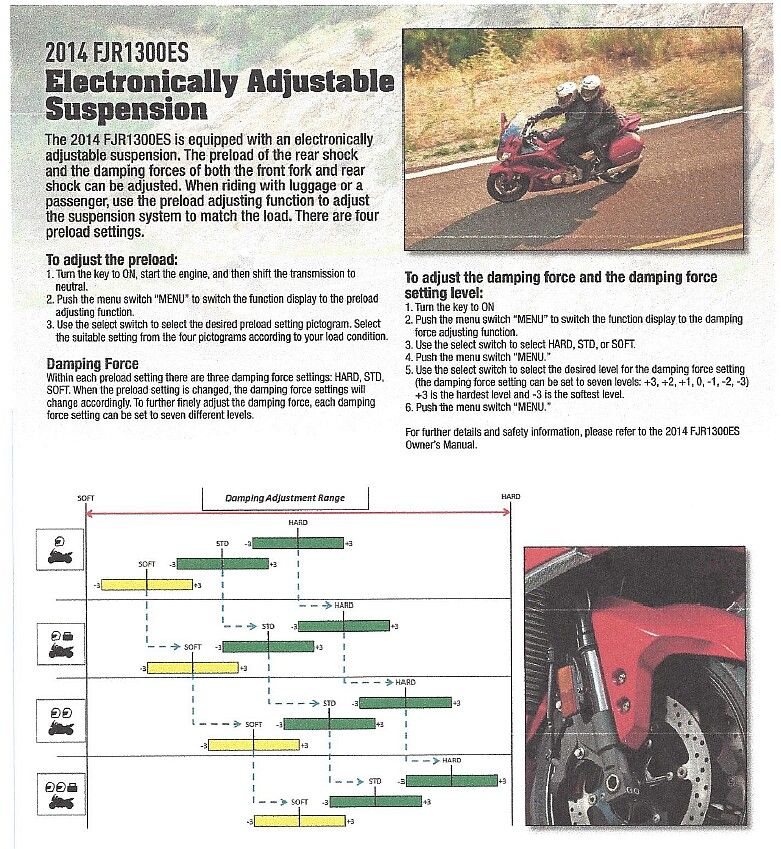DocFJR
Well-known member
Now that the FJR (ES) can adjust suspension settings via the firmware, I wonder if there is any additional range available that is either hidden in a diagnostic menu or might be available via future Power Commander type devices. Obviously, programming can't assess hardware that isn't already there, but Yamaha might have left some additional range as a margin. Or perhaps future FJRs will widen the range to include much firmer "Hard" settings. At the least, I'd love to see a setting firmer than the Hard +3 we have now (my opinion only). A setting or two that is just a little too firm for all but the most aggressive riding would be great. The entire range of available settings on my ES feels like 21 levels between soft and medium.



























































![fjackets Real Lambskin Leather Biker Jacket — Quilted Cafe Racer Zip Up Moto Leather Jackets For Men | [1100085] Johnson Brown, XL](https://m.media-amazon.com/images/I/41I7Pm1f+vL._SL500_.jpg)



